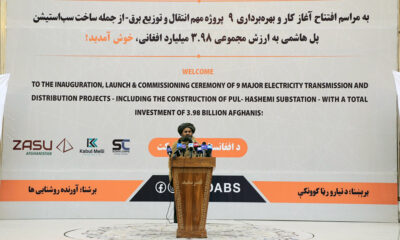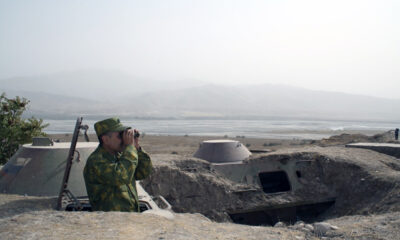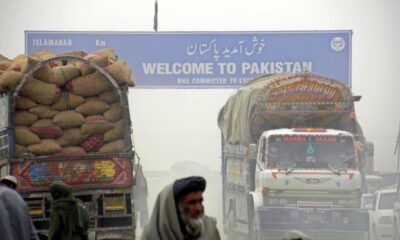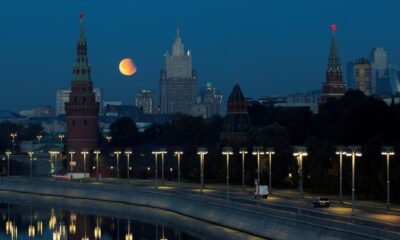World
Dam destroyed in Ukraine, flooding war zone
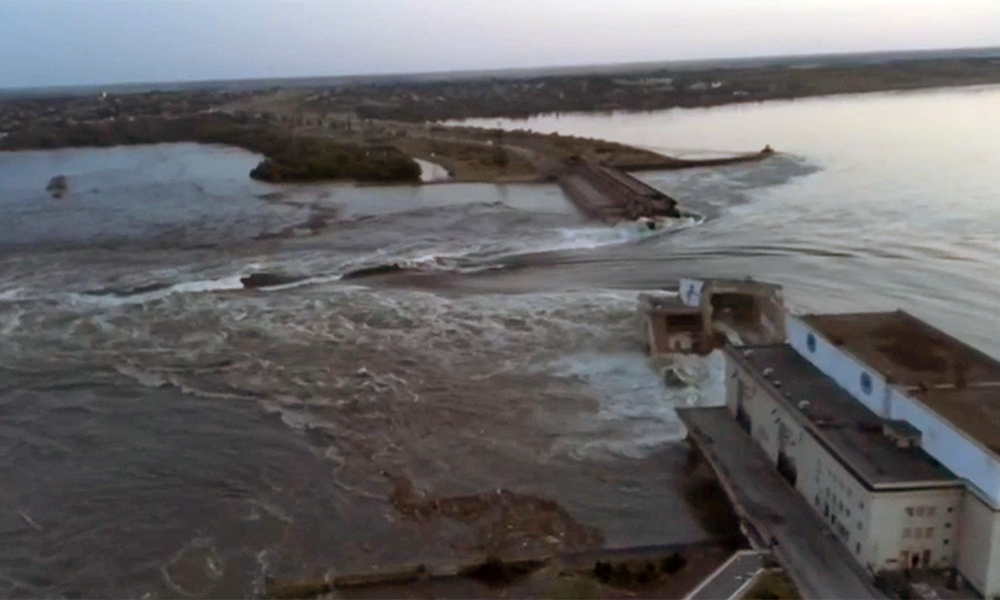
A torrent of water burst through a huge dam on the Dnipro River that separates Russian and Ukrainian forces in southern Ukraine on Tuesday, flooding a swathe of the war zone and forcing villagers to flee.
Ukraine and its Western allies accused Russia of blowing up the dam in a deliberate war crime. The Kremlin said it was Ukraine that had sabotaged the dam, to distract attention from a counteroffensive Moscow claims is faltering. Some Russian-installed officials said the dam had burst on its own, Reuters reported.
Neither side offered immediate public evidence of who was to blame. The Geneva Conventions explicitly ban targeting dams in war, because of the danger to civilians posed by destruction of such “works and installations containing dangerous forces”.
By mid-morning in the city of Kherson on the Ukrainian-held side, a pier on a tributary of the Dnipro had already been submerged by the surge climbing the banks.
“The water level has so far risen one meter,” resident Oleksandr Syomyk told Reuters. “We’ll see what happens next but we hope for the best.”
The Nova Kakhovka dam supplies water to a swathe of southern Ukraine’s agricultural land, including the Russian-occupied Crimean peninsula, as well as cooling the Russian-held Zaporizhzhia nuclear plant. The vast reservoir behind it is one of the main geographic features of southern Ukraine, 240 km long and up to 23 km wide.
A swathe of countryside lies in the flood plain below, with villages on the Russian-held southern bank seen as particularly vulnerable.
The destruction of the dam creates a new humanitarian disaster in the center of the war zone and transforms the front lines just as Ukraine is unleashing a long-awaited counteroffensive to drive Russian troops from its territory.
Russia has controlled the dam since early in the war, although Ukrainian forces recaptured the northern side of the river last year. Both sides had long accused the other of planning to destroy it.
“Russian terrorists. The destruction of the Kakhovka hydroelectric power plant dam only confirms for the whole world that they must be expelled from every corner of Ukrainian land,” President Volodymyr Zelenskiy wrote on the Telegram messaging app.
Russians had “carried out an internal detonation of the structures” of the dam. “About 80 settlements are in the zone of flooding,” he said on Telegram.
NATO’s Secretary-General Jens Stoltenberg called it “an outrageous act, which demonstrates once again the brutality of Russia’s war in Ukraine”.
Kremlin spokesman Dmitry Peskov told a regular news briefing: “We can state unequivocally that we are talking about deliberate sabotage by the Ukrainian side.”
The U.N. nuclear watchdog said the Zaporizhzhia power plant should have enough water to cool its reactors for “some months” from a separate pond located above the reservoir, and called for the pond to be spared.
The water level at the town immediately adjacent to the breached dam could rise by up to 12 meters, its Russia-installed mayor, Vladimir Leontyev, said on Telegram.
Video showed water surging through the remains of the dam – which is 30 meters tall and 3.2 km long.
Some 22,000 people living across 14 settlements in Kherson region are at risk of flooding, Russia’s RIA news agency quoted the Moscow-installed head of the region as saying. Kherson is one of five Ukrainian regions Moscow claims to have annexed.
World
Mosque blast in northeastern Nigeria kills five, injures dozens
World
Libyan army’s chief dies in plane crash in Turkey
Turkish Justice Minister Yilmaz Tunc said an investigation into the crash was under way.

The Libyan army’s chief of staff, Mohammed Ali Ahmed Al-Haddad, died in a plane crash on Tuesday after leaving Turkey’s capital Ankara, the prime minister of Libya’s internationally recognised government said, adding that four others were on the jet as well, Reuters reported.
“This followed a tragic and painful incident while they were returning from an official trip from the Turkish city of Ankara. This grave loss is a great loss for the nation, for the military institution, and for all the people,” Libyan Prime Minister Abdulhamid Dbeibah said in a statement.
He said the commander of Libya’s ground forces, the director of its military manufacturing authority, an adviser to the chief of staff, and a photographer from the chief of staff’s office were also on the aircraft.
Turkish Interior Minister Ali Yerlikaya said on social media platform X that the plane had taken off from Ankara’s Esenboga Airport at 1710 GMT en route to Tripoli, and that radio contact was lost at 1752 GMT. He said authorities found the plane’s wreckage near the Kesikkavak village in Ankara’s Haymana district.
He added that the Dassault Falcon 50-type jet had made a request for an emergency landing while over Haymana, but that no contact was established.
The cause of the crash was not immediately clear.
Turkish Justice Minister Yilmaz Tunc said an investigation into the crash was under way.
The Tripoli-based Government of National Unity said in a statement that the prime minister directed the defence minister to send an official delegation to Ankara to follow up on proceedings.
Walid Ellafi, state minister of political affairs and communication for the GNU, told broadcaster Libya Alahrar that it was not clear when a crash report would be ready, but that the jet was a leased Maltese aircraft. He added that officials did not have “sufficient information regarding its ownership or technical history,” but said this would be investigated.
Libya’s U.N.-recognised Government of National Unity announced official mourning across the country for three days, read the report.
Turkey’s defence ministry had announced Haddad’s visit earlier, saying he had met with Turkish Defence Minister Yasar Guler and Turkish counterpart Selcuk Bayraktaroglu, along with other Turkish military commanders.
The crash occurred a day after Turkey’s parliament passed a decision to extend the mandate of Turkish soldiers’ deployment in Libya by two more years.
NATO member Turkey has militarily and politically supported Libya’s Tripoli-based, internationally recognised government. In 2020, it sent military personnel there to train and support its government and later reached a maritime demarcation accord, which has been disputed by Egypt and Greece.
In 2022, Ankara and Tripoli also signed a preliminary accord on energy exploration, which Egypt and Greece also oppose, Reuters reported.
However, Turkey has recently switched course under its “One Libya” policy, ramping up contacts with Libya’s eastern faction as well.
World
Trump administration recalls dozens of diplomats in ‘America First’ push
The State Department declined to name those affected, with a senior official calling the recalls a routine step for new administrations.
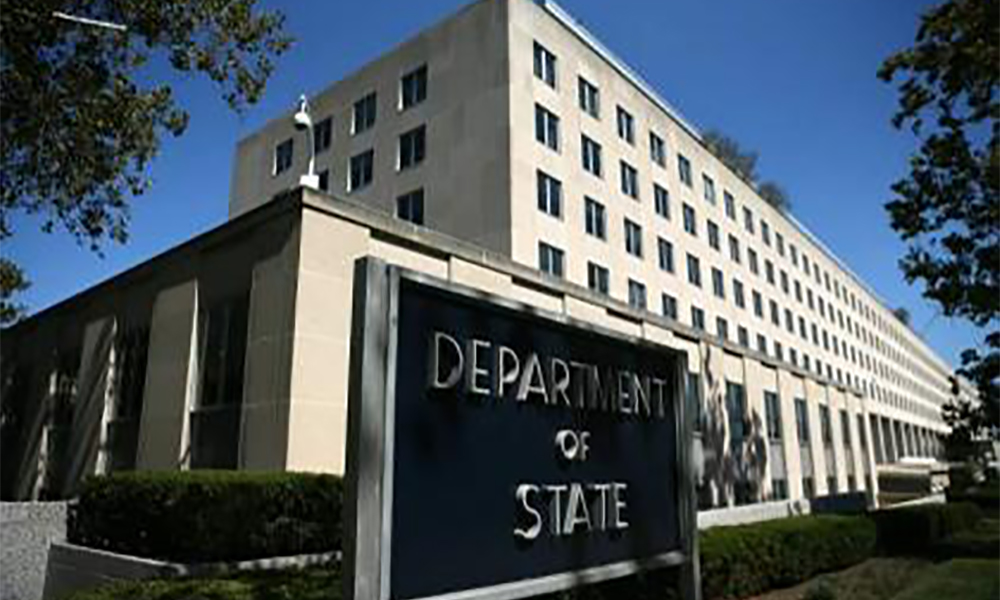
The Trump administration is recalling nearly 30 U.S. ambassadors and senior career diplomats to ensure embassies align with President Donald Trump’s “America First” agenda, a move critics say could weaken U.S. credibility abroad.
The State Department declined to name those affected, with a senior official calling the recalls a routine step for new administrations. The official said ambassadors are the president’s representatives and must advance his policy priorities.
However, officials familiar with the matter said the recalls largely affect career Foreign Service officers posted to smaller countries, where ambassadors are traditionally non-partisan. Those ordered back to Washington were encouraged to seek other roles within the State Department.
The American Foreign Service Association said some diplomats were notified by phone without explanation, calling the process “highly irregular” and warning that such actions risk harming morale and U.S. effectiveness overseas. The State Department did not respond to the criticism.
The move, first reported by Politico, comes as Trump seeks to place loyalists in senior roles during his second term, after facing resistance from the foreign policy establishment in his first.
Democrats have criticised the decision, noting that around 80 ambassadorial posts remain vacant. Senator Jeanne Shaheen said the recalls undermine U.S. leadership and benefit rivals such as China and Russia.
-

 Latest News2 days ago
Latest News2 days agoAfghanistan exports 10 containers of batteries to Saudi Arabia and UAE for first time
-

 Latest News2 days ago
Latest News2 days agoPakistani cleric condemns lifetime immunity for Army Chief as un-Islamic
-
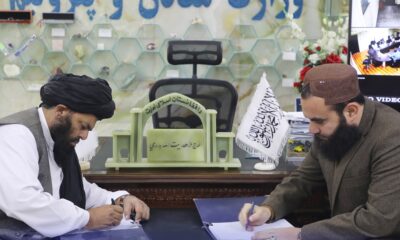
 Latest News4 days ago
Latest News4 days agoAfghanistan signs 30-year deal for marble mining in Daikundi
-
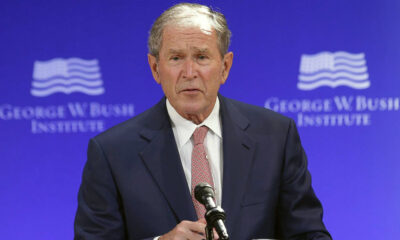
 Latest News4 days ago
Latest News4 days agoBush Institute criticizes Trump administration’s Afghan immigration freeze
-

 International Sports2 days ago
International Sports2 days agoAriana News to broadcast key AFC Champions League Two clash
-

 Regional3 days ago
Regional3 days agoPakistan agrees to $4 billion arms deal with Libyan National Army
-

 Health2 days ago
Health2 days agoAfghan Health Minister hails India visit as new chapter in bilateral ties
-
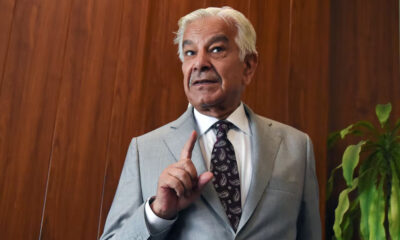
 Latest News1 day ago
Latest News1 day agoPakistan’s actions target militants, not religious sites: Khawaja Asif


